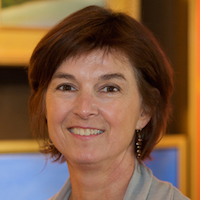Comments (2)

she is one of my favs

We do our best to use images that are open source. If you feel we have used an image of yours inappropriately please let us know and we will fix it.
Our writing can be punchy but we do our level best to ensure the material is accurate. If you believe we have made a mistake, please let us know.
If you are planning to see an artwork, please keep in mind that while the art we cover is held in permanent collections, pieces are sometimes removed from display for renovation or traveling exhibitions.
May 22, 1844
Allegheny, Pennsylvania, U.S.A.
June 14, 1926
Le Mesnil-Théribus, France

Sr. Contributor
Mary was born into a well-to-do family in Pennsylvania. Respectable. Stuffy, perhaps, but loaded. At sixteen, Mary told her father that she'd be going to school for art. His response was, "I'd rather see you dead first." Obviously, he didn't understand that she was going to art school. End of story. Not long after, she started at the best art school in Philadelphia. But it ended up bogus.
The school taught her at a slower, remedial pace because of the composition of her sexual organs. Blocking her altogether out of the nude study courses. Certainly, seeing nude figures would have been utterly scandalous for her lady eyes. Driven her mad, even. Well, it did drive her mad, with a hate fire for the bullsh*t of the patriarchy. She went back to her parents and reiterated that she would study art, not pretend to do so. Thus, she went to free-wheeling France.
Success and respect in France were actually attainable. In no time, she exhibited in the Paris Salon and bought an estate in Montmartre with all her sweet art sale cash. Her family even moved in with her in France (with Dad hopefully having to live in a closet until he apologized for the whole murder threat thing). Then her art game went next level with an introduction to Edgar Degas.
Cassatt and Degas were peers, even collaborators. He invited her to join the Impressionists. She's the only American and one of only three women that was invited to join. Even at that level, society made it clear that womanhood was a handicap. While we see her relationship with Degas as workplace appropriate, there's evidence something more was at play.
Mary burned all of her correspondence with the artist shortly after his death. Cassatt, during their work together, acted as his model more than any other individual. However, knowing that people heard "artist's model" and thought "colleagues with benefits," she kept that work hushed. There's more, even. Degas owned more work by Cassatt than any other contemporary artist, and Cassatt pushed his work to her friends with whom she acted as an art advisor. For instance, she's almost single-handedly responsible for the pieces by Degas in the Havemeyer family's collection that wound up in the Met.
The reason that she kept a tight lid on even the appearance of anything other than a professional relationship was that client's perceptions of her as a professional artist hinged on her personal life. All her art buddies lived in a fun world of cheap liquor and loose women. The people she needed to impress had the same outlook as the art school instructors in Philadelphia: A woman can't be on the level if she's cool with her own sexuality. If there was something going on between the two, she had good reason to burn up the evidence before anyone came looking.

Contributor
When she went to art school in the US, female students were not allowed to paint from live models, so she had to use casts instead. When she tried to enroll in a French art school, female students were not allowed at all, so she had to take private lessons outside the school.
Cassatt was good friends with superstar French painter Edgar Degas. Had Facebook existed back then, their relationship status would have been "it's complicated." Degas once said "I would have married her, but I could never have made love to her."
Featured Content
Mary Stevenson Cassatt (/kəˈsæt/; May 22, 1844 – June 14, 1926) was an American painter and printmaker. She was born in Allegheny, Pennsylvania (now part of Pittsburgh's North Side), but lived much of her adult life in France, where she befriended Edgar Degas and exhibited with the Impressionists. Cassatt often created images of the social and private lives of women, with particular emphasis on the intimate bonds between mothers and children.
She was described by Gustave Geffroy as one of "les trois grandes dames" (the three great ladies) of Impressionism alongside Marie Bracquemond and Berthe Morisot. In 1879, Diego Martelli compared her to Degas, as they both sought to depict movement, light, and design in the most modern sense. She also played an important role in introducing Impressionism to American collectors, notably through her friendship with the Havemeyer family.
Check out the full Wikipedia article about Mary Cassatt

she is one of my favs
Mary Mary quite contrary was a rebel and a star. Five stars.